After I explored the capitol building in Jefferson City, I laid out a plan for the drive back to St. Louis. It would have been easiest to drive north to I-70, and finish the day’s trip on the interstate. The weather was still miserable, although it wasn’t raining as much as it had earlier in the day. I just wasn’t content to write off sightseeing for the day, so I crossed the Missouri River, and turned onto Route 94.
Missouri Route 94 runs along the flatlands that surround the Missouri River. The surrounding hills come to an abrupt end on either side of the river, providing a buffer of rich, flat farmland on either side of the water. Most of the time, Route 94 stays in the flatlands, but hugs the edge of the hills. Occasionally, the road climbs through a small town or two, which are in the hills, slightly higher than the river delta.
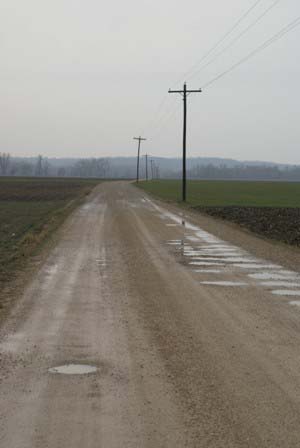
No, this isn’t Route 94. It’s one of many side roads that cut across the farmland, and provide river access. I chose this road at random…
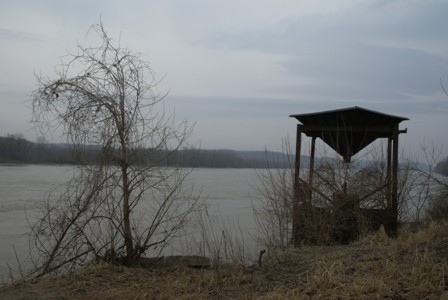
… simply to get a glimpse of the river, which is far enough from Route 94 to be out of sight in most places. At this river access point, there was a muddy boat ramp, and some kind of old contraption at the water’s edge.
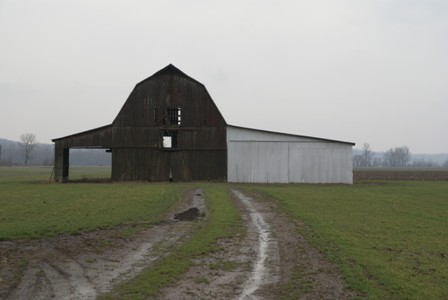
On the way back to the main road, I decided to take a turn down an even less-maintained side road. Taking a picture of this barn seemed like a good idea, until I hit the side road’s muddy surface. It’s a miracle I didn’t get stuck out here.
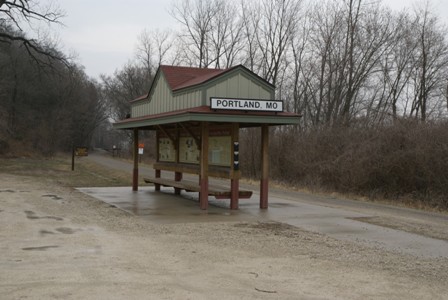
Running alongside Route 94, there’s an old railroad grade that has been converted into a remarkably long bicycle trail. Katy Trail is a linear State Park that runs 225 miles, from St. Charles (near St. Louis) to Clinton, Missouri. The trail follows the former path of the Missouri-Kansas-Texas railroad, which abandoned the line after flooding damaged the tracks in 1986. Katy Trail is the longest rails-to-trails project in the U.S.
If you’ve brought a bicycle along for the ride, pick a portion of the trail and explore it. The old railroad grade crosses some neat old trestles. It also provides access to the edge of the Missouri River in towns like Portland, Missouri.
Starkenburg, Missouri:
St. Martin’s Church and Our Lady of Sorrows Shrine
The farmland and small towns along the Missouri River aren’t the kind of place you’d expect to find a large church, let alone two beautiful, historic chapels with towering steeples. That’s why the churches at Starkenburg, Missouri came as such a surprise.
As you travel along Route 94, there are no billboards for businesses or attractions, until you come to the intersection with County Route P. A couple of signs point you towards St. Martin’s Church and Our Lady of Sorrows Shrine. Both are located side by side, in the town of Starkenburg (in fact, they are the town of Starkenburg), about 3 miles uphill from the river lowlands.
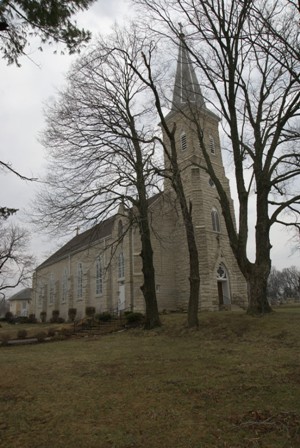
The first church was built on this site in 1852. It was a log church, and after 20 years, work began on a more permanent structure. The first stone church is St. Martin’s, was completed in 1874, with a bell tower and steeple added in 1891. But once again, the congregation grew, and with many people arriving on pilgrimages, a bigger church was once again needed.
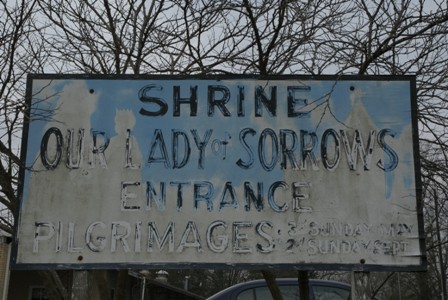
So, they built Our Lady of Sorrows Shrine.
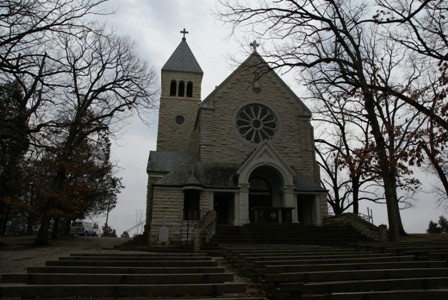
The new chapel was built between 1906 and 1910. The church raised funds for the construction, by selling a monthly magazine, written in German and English, in 1900.
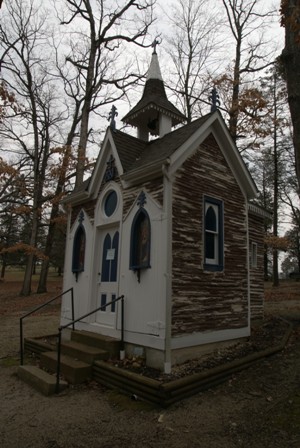
A small wooden chapel is actually the second oldest structure on the grounds. This small chapel was built in 1888 (and later expanded). Its purpose is to provide protection for the “white lady”, a statue that dates back to 1847, when early settlers first started gathering to worship here.
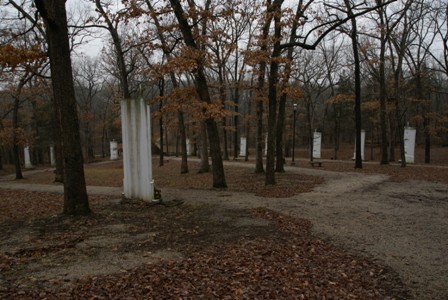
There’s much more to see on the grounds of Our Lady of Sorrows. The Stations of the Cross are displayed in concrete. This is the third set, completed in 1950. Earlier, and less permanent, Stations of the Cross once stood here, as early as 1889.
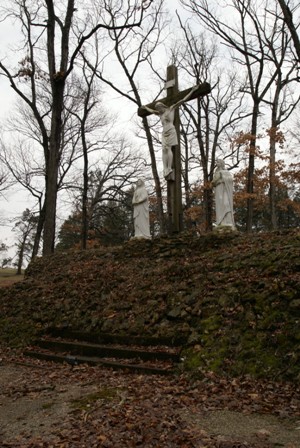
Overlooking the Stations of the Cross is Mount Calvary…
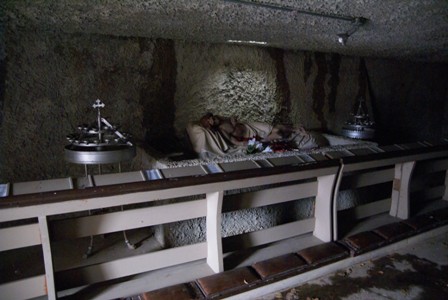
… and underneath Mount Calvary is the Holy Sepulcher, a creepy cave where a statue of Jesus’ body lies.
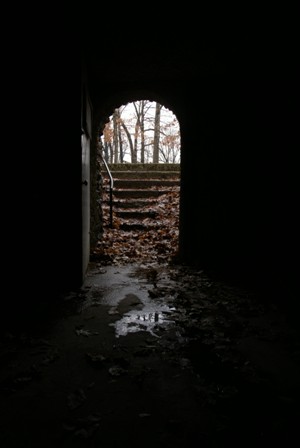
The Sepulcher gave me the willies, but the rest of the church grounds was beautiful — even in winter. If you are Catholic, I’m certain you would have a greater appreciation of everything that’s here. I’m not a Catholic, but I’m still glad I stopped and walked around for a few minutes.
Note: This trip was first published in 2008.

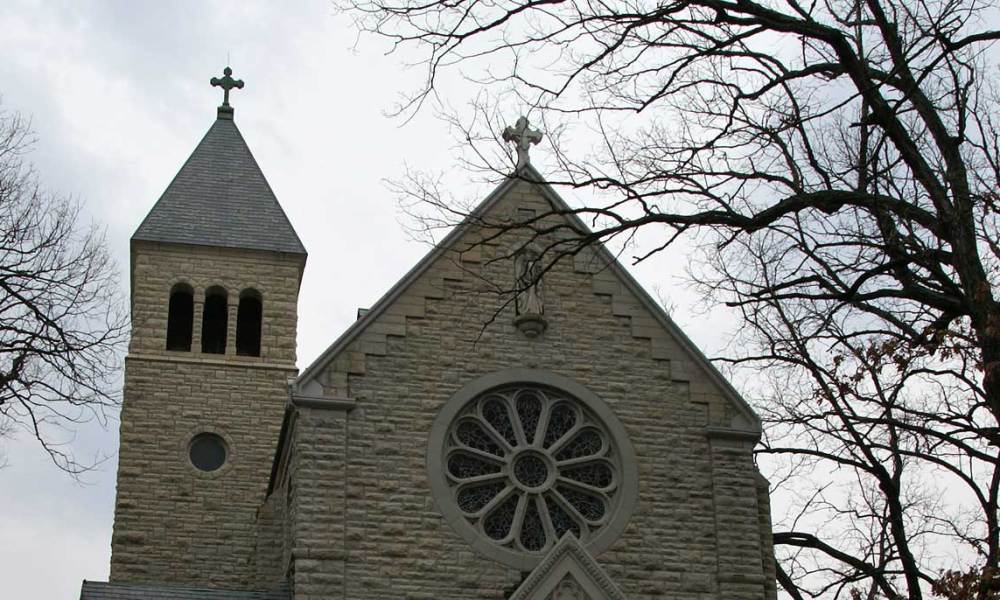


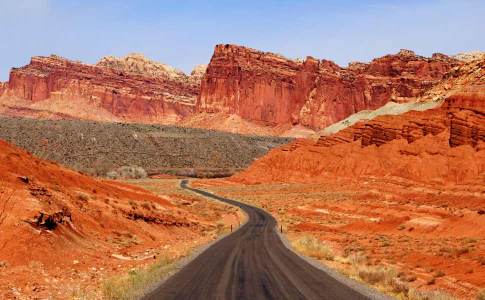
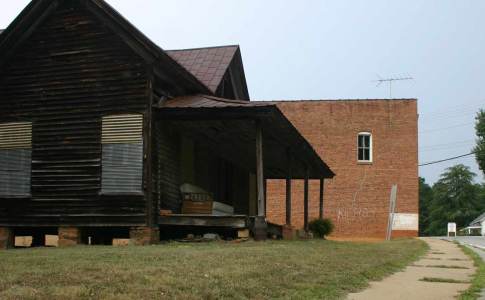
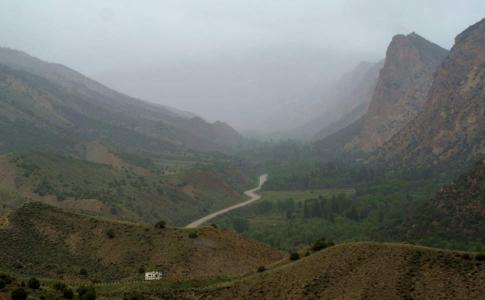
No comments